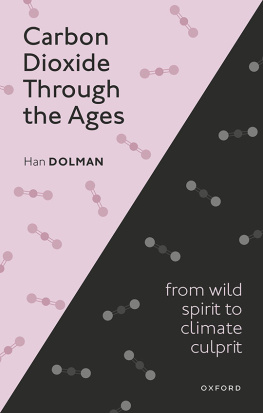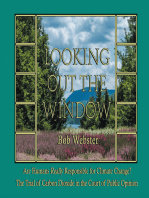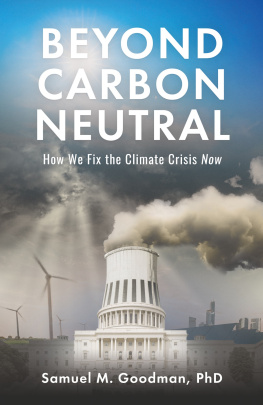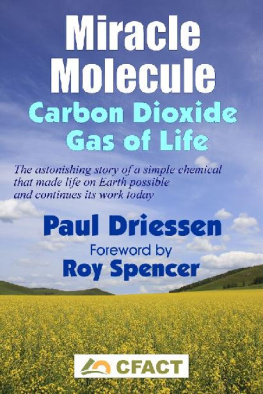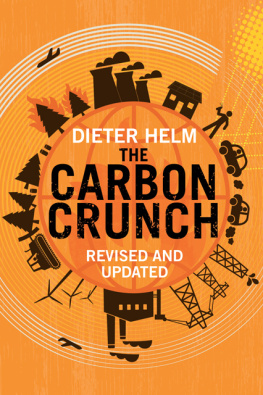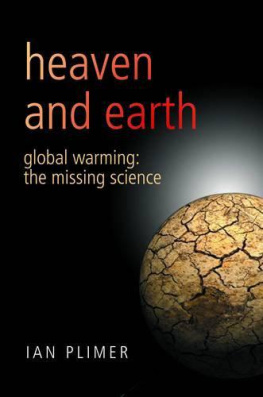

Great Clarendon Street, Oxford, OX2 6DP,
United Kingdom
Oxford University Press is a department of the University of Oxford. It furthers the Universitys objective of excellence in research, scholarship, and education by publishing worldwide. Oxford is a registered trade mark of Oxford University Press in the UK and in certain other countries
Albertus Johannes Dolman 2023
The moral rights of the author have been asserted
All rights reserved. No part of this publication may be reproduced, stored in a retrieval system, or transmitted, in any form or by any means, without the prior permission in writing of Oxford University Press, or as expressly permitted by law, by licence or under terms agreed with the appropriate reprographics rights organization. Enquiries concerning reproduction outside the scope of the above should be sent to the Rights Department, Oxford University Press, at the address above
You must not circulate this work in any other form
and you must impose this same condition on any acquirer
Published in the United States of America by Oxford University Press
198 Madison Avenue, New York, NY 10016, United States of America
British Library Cataloguing in Publication Data
Data available
Library of Congress Control Number: 2022949984
ISBN 9780198869412
DOI: 10.1093/oso/9780198869412.001.0001
Printed and bound by
CPI Group (UK) Ltd, Croydon, CR0 4YY
Links to third party websites are provided by Oxford in good faith and for information only. Oxford disclaims any responsibility for the materials contained in any third party website referenced in this work.
PREFACE
I n May 2022 the global average concentration of CO2 in the atmosphere hit 420 ppm, 50% more than the pre-industrial value of 280 ppm. The level of carbon dioxide had not been so high on our planet for 4 million years. In early June 2022 I spent a day at the plenary meeting of the Subsidiary Body for Scientific and Technological Advice of the UN Convention on Climate Change in Bonn, Germany where almost everything related to the relentless rise in CO2 came across in the meeting: responsibility for historical emissions, adaptation to climate change, equity, social welfare, and regulations to stop the emissions. These two events, with hindsight, together provide almost a complete summary of the rationale for writing this book.
In 2015 the Paris Agreement had been put forward as a successor to the ailing Kyoto Protocol. It aimed to set limits of climate change to 2 C or preferably 1.5 C. This was widely considered a landmark agreement. A few years later I realized that the perception of CO2 in society had changed. It was no longer a largely unknown, harmless substance, instead it had become the climate culprit par excellence. I began to wonder why and how this had changed (and why not earlier) and came to realize that an investigation into the history of CO2 might help in providing answers. This book is the result of that investigation. It inevitably contains biases. I am a natural (earth) scientist with an interest in the history and sociology of science, but not an expert in those latter fields. Nevertheless, I hope that the book achieves its aims to trace CO2 through the ages and geological time, explaining its role in the atmosphere, ocean, and land and finally the impact of human burning of fossil fuel and deforestation. This story would not be complete if I did not include the political process that led to the Paris Agreement, through increased scientific awareness first, and a series of large international conferences and meetings that put climate change on the political agenda. It also deals with the lack of urgency of governments, that have for too long blissfully ignored the scientific evidence that was provided to them by organizations like the Intergovernmental Panel on Climate Change.
The whole book has been carefully read by Ingeborg Levin and Gerald Ganssen who have, as always, identified sloppy writing and provided new perspectives on the matter. Parts of the book have been read by Guido van der Werf, Joost Tielbeke, Rob Buiter, Henk Brinkhuis, Matthew Humphreys, Anja Spang, Kim Sauter, and Pierre Offre. The first versions have been edited by John Gash, who not only gave valuable advice on the writing but often also on its content and provided a continuous stimulus to go on. Zicarlo van Aalderen provided invaluable help in ordering the notes and with establishing the copyright of some of the figures. Quite a few of those were (re)drawn by Barbara Pillip. I am greatly indebted to all these people, although any remaining errors remain of course my own responsibility. I am grateful to my editor at Oxford University Press, Adlung Sonke, who quite quickly took to the idea of this book, and made it possible.
Writing this book was interrupted by a pandemic and a change of jobs, from a university professor in the department of earth sciences at the Vrije Universiteit of Amsterdam to the Royal Netherlands Institute for Sea Research. This caused some delay in the writing of the final chapters, but also widened my perspective. The publishing of three IPCC reports and the increasing frustration among my younger scientist colleagues about the lack of urgency among policymakers provided the final push for me to finish the book.
The support of my partner Agnes and my sons Jim and Wouter during the writing of the book was invaluable, as it is for everything else in my life.
CONTENTS
CHAPTER 1
CARBON DIOXIDE, FROM AWILD SPIRIT TO CLIMATE CULPRIT
T his book traces the history of carbon dioxide through the ages. Carbon dioxide made a renewed star appearance on the worlds stage in 2015 when the governments of the world agreed in Paris to limit global warming to a maximum of 2 Cbut preferably 1.5 C compared to pre-industrial time (around 1850). This difference might seem small, but the higher the temperature, the more the planet will suffer from extreme events: droughts, extreme flooding, rise in sea level, heatwaves, and loss of biodiversity. So, something needs to be done, we need to reduce our emissions of carbon dioxide fast, incredibly fast.
The book traces the development of the perception of CO2 through the ages. We discuss its role in climate through the absorption of infrared radiation. It deals with its discovery by the Flemish doctor van Helmont, to its final chemical understanding, its role in photosynthesis and respiration, the variability through geological time, and closer in time to us, variability during the ice ages. We then enter the period when carbon dioxide becomes a human phenomenon though fossil fuel burning and deforestation. It describes the worlds efforts to control the rise in CO2 through now more than 60 years, since it became obvious that humans were changing the composition of the atmosphere and climate. We then discuss what needs to be done to stop climate from warming beyond the limits set in the Paris Agreement. It can be done, but it is tough
The world watched in anxiety in December 2015 when representatives of the 194 countries of the United Nations convened in Paris to negotiate a new climate agreement. The previous conference in Copenhagen in 2009 had been a thorough disappointment to the delegates of most countries. And, to the multitude of stakeholders that are involved in such meetings, such as representatives of non-governmental organizations, fossil fuel and nuclear fuel lobbyists and organizations claiming to have the ultimate solutions to the climate crisis, and not to mention the general public. There was a need to reach an agreement this time. Not only because the Kyoto protocol, that was negotiated in 1997 with help of the later Nobel prize winner Al Gore, was virtually dead and needed an update but also because the world had seen the number of extreme weather events increasing that could be directly linked to climate change. There was a sense of urgency among the delegates, shared by the local French organizers and, importantly, the world.
Next page
